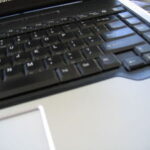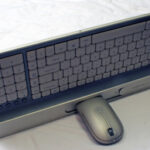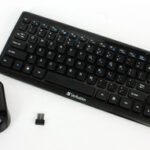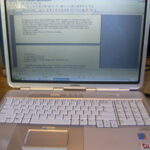Desktop computer – a personal computer designed to be set up on a desk or table and used in that place for an extended period of time.
Laptop computer – a flat screen, battery powered portable computer that you can rest on your lap
PDA personal digital assistant – a pocket sized computer used to organize appointments, tasks, notes, contacts, and other personal information.
Input devices – device for accepting input, such as a keyboard
Output devices – device for sending information from the computer, such as a monitor or printer
Processor – part of the computer that processes information, performs arithmetic calculations, and makes basic decisions based on information values.
Motherboard – the circuit board that contains a computer’s CPU
Peripheral – an external device, such as a keyboard or monitor, connected via cables to the system central processing unit
Memory – stores programs and the data they need to be instantly accessible to the CPU
RAM random access memory – memory that stores program instructions and data temporarily
ROM read only memory – memory that includes permanent information only. The computer can only read information form it; it can never write any new information on it
Gigahertz – billions of clock cycles per second, a measurement of a computer’s clock speed
Bit – binary digit, the smallest unit of information. A bit can have two values: 0 or 1
Byte – grouping of 8 bits
Kilobyte – about 1000 bytes of information
Megabyte – approximately 1 million bytes
Gigabyte – approximately 1000 megabytes
Terabyte – approximately 1 million megabytes
ASCII (American Standard Code for information interchanged) – a code that represents characters as 8-bit codes. Allows the binary computer to work with letters, digits, and special characters
Unicode – a 65,000 character set for making letters, digits, and special characters fit into the computer’s binary circuitry
OCR (optical character recognition) – locating and identifying printed characters embedded in an image, allowing the text to be stored as an editable document.
OMR (optical mark reader) – a reading device that uses reflected light to determine the location of pencil marks on standardized test answer sheets.
Barcode reader – a reading tool that uses light to read universal product codes, inventory codes, and other codes created out of patterns of variable width bars.
RFID tag – a device that, when energized by a nearby RFID reader, broadcasts information to the reader for input into a computer
Environmental issues related to the disposal of hardware:
- · Made from non-degradable plastics
- · contains chemicals such as lead, cadmium, mercury and can seep into landfills and groundwater
- ·: carpel tunnel, vision problems, and back and neck problems
Advantages of Biometrics
- · Easier to access secure facilities because it requires physical characteristic
- ·. Who has access to the data? What if it’s done without knowledge or consent?
Viruses
- ·.
Telecommuting Advantages
+ saves travel time
+save transport cost – gas, tolls,
+better for environment
+flexible schedule allows for family time
+good for disabled workers
+good for workers in rural or remote areas
+control your own ergonomics at home
+employer saves on office expenses
Disadvantages of Telecommuting
- · Employee must be disciplined to avoid distractions at home
- · Lack of socialization with coworkers
- · Employer may feel you’re available 24/7
Source:
Baase, Sara. A Gift of Fire: Social, Legal, and Ethical Issues in Computing. Upper Saddle River, NJ: Prentice Hall, 1997. Print.




